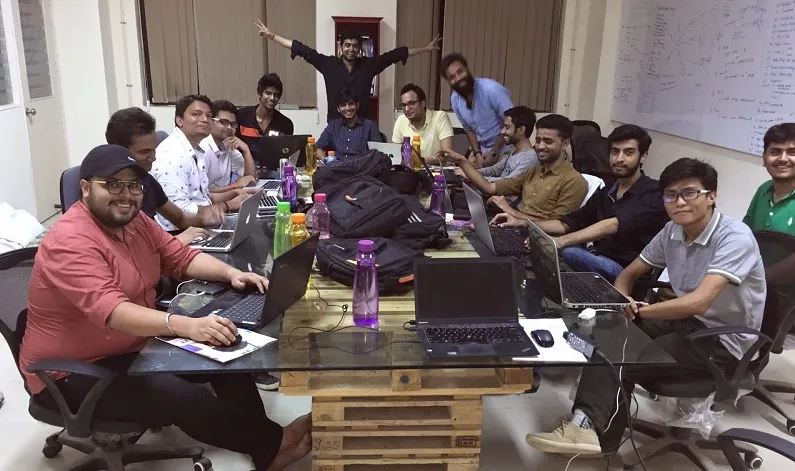KartRocket’s Kraftly wants to become Paytm for homepreneurs in C2C classifieds
The Indian e-commerce industry has predominantly been a B2C market, where only a few players have controlled everything. This has created a saturation point for the end consumer, as every marketplace seems exactly the same in terms of product range and shopping experience.

What startups have not realised is that there is a huge segment of over 50 million ‘homepreneurs’, artisans and flea market sellers that offers eclectic products that are available only at an offline setting.
Kraftly, incubated by KartRocket, is weeding out this gap for homepreneurs by rolling out the country’s first mobile C2C platform.
Saahil Goel, CEO, KartRocket says,
We want to organise this ‘unorganised’ market of homepreneurs.
According to the company, Kraftly acts as a complete solution for homepreneurs. The app enables individuals, hobby sellers and shop owners to create their own branded micro-shop, list their products and receive payments on the go, all this without the need of any paperwork.
Kraftly manages the complete payment and logistics process for each seller, thereby allowing the long tail of small and home sellers to go online. Buyers are able to discover unique products in a personalised manner and directly interact with sellers.
Onboarding of homepreneurs on regular marketplaces is a big challenge
Saahil adds,
We are focusing on homepreneurs as the current e-commerce ecosystem is primarily geared up for B2C commerce with a strong focus on standardised products sold through a small set of distributors and suppliers. Small sellers make up a large part of offline retail, yet are unable to sell with the large marketplaces.
Onboarding a seller onto B2C marketplaces is a tedious process as not many small sellers are willing. Further, marketplaces have huge barriers which prevented this seller community from launching online. This includes product image quality, minimum number of products required, product specifications and documentation. Saahil points out,
With a strong focus on promoting small sellers, Kraftly allows users to simply click pictures of their products and completely manage their micro-shop, all from their smartphones.
So far, Kraftly has amassed 20,000 installs and 3,000 sellers have signed up since its launch. The session time per user has increased from eight minutes to 14 minutes and close to 20 per cent of the buyers are doing repeat purchase.
Growth of KartRocket
In last three years, KartRocket enabled over 3,500 clients to start selling online and introduced ancillary services like ShipRocket (to handle logistics), SellRocket (to list on marketplaces) and TrafficIQ (to list on affiliates).
KartRocket currently does over 90,000 shipments a month. Saahil adds,
We have grown over six times in the last one year and are doing an annualised GMV of USD 30 million.
Pain-points addressed by Kraftly
In the last three years, KartRocket observed that these sellers are too small in their operations to drive traffic and transactions to their website. Saahil says,
This is the biggest pain-point that we are trying to solve by helping these sellers get orders, revenue and visibility.
There are various problems like catalouging, onboarding, shipping and payments around selling online. The app addresses all these problems without asking for documentation. Kraftly also pioneers a unique wallet system that allows buyers to directly deposit payments into the seller’s wallet, making the transaction transparent.

Shop owners can also use the app as a point-of-sale system for walk-in customers and use it for accepting credit and debit cards in their shops instantly by signing up on the app.
Size of opportunity
The Indian e-commerce industry is projected to grow by 15 times in the next five years and is expected to become a USD 75 billion industry by 2020. On the other hand, the estimated number of unorganised sellers is 50 million. These two data points are enough to justify the need by companies like Kraftly to address the huge and untapped potential. Sahil says the company aims to reach a USD one billion GMV in the next three years in this market.
YourStory’s take
There is no pure-play C2C marketplace similar to Kraftly. It, however, competes with Snapdeal’s Shopo. Shopo is more focussed on enabling chat and buy between the seller and buyer, and lets them decide on a mutually convenient mode of transaction as well as delivery. Kraftly, on the other hand, is a complete e-commerce ecosystem offering solutions around payments as well as logistics. Buyers are able to discover unique products in a personalised manner and can directly chat with the seller.
The horizontal C2C classifieds space has not moved much in India. Top players like Quikr and OLX are slowly moving towards verticalisation and B2C segment as most of their growth is coming from verticals. Interestingly, Kraftly is also solving product discovery in the consumer's neighbourhood radius. It essentially means the Delhi-based company is also targeting hyperlocal markets through Kraftly.
Singapore-based Carousell runs on the same model as well. It raised six million Series-A funding, led by Sequoia Capital in November last year.
Kraftly seems to be an intelligent move from KartRocket, solving major bottlenecks like documentation, payment and logistics for small merchants. In the future, it would be interesting to see how Kraftly evolves and scales up.










![[Startup Bharat] With over 60 pc of users in small towns, how ShopX created a new digital retail model](https://images.yourstory.com/cs/2/730b50702d6c11e9aa979329348d4c3e/ShopX-1586953628520.png)
![[Exclusive] Vauld to seek 3-month moratorium extension as creditors panel explores bailout options](https://images.yourstory.com/cs/2/a09f22505c6411ea9c48a10bad99c62f/VauldStoryCover-01-1667408888809.jpg)